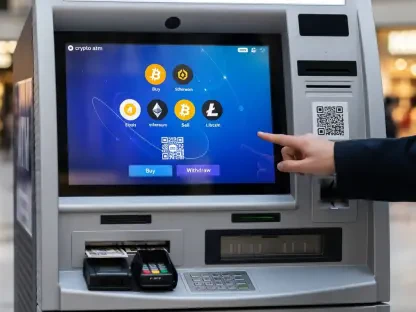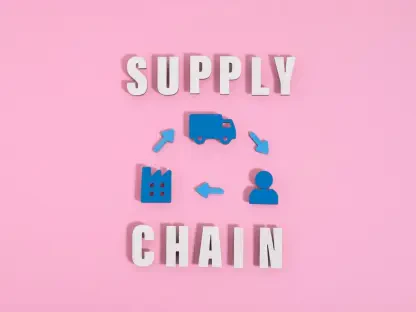Amid record-breaking promotions and rolling sales events that stretch across borders and calendars, peak-season logistics quietly shifted from episodic firefighting to a sustained, high-stakes operating model that decides winners and losers in global e-commerce. Consumers still expect fast, precise delivery at the click of a button; the difference now is that those expectations must be met for weeks at a time while parcel flows swell to billions and networks bend under pressure from upstream volatility and downstream cost gravity.
The picture that emerged shows an industry in full recalibration. Promotions that once created short-lived surges now make much of the fourth quarter a prolonged super-peak, with Singles Day in China, Black Friday and Cyber Monday in the West, and White Friday in the Middle East layering demand into rolling waves. Carriers, platforms, and retailers responded with a mix of early inventory placement, flexible warehousing, automation, and alternative delivery nodes designed to hold service steady as volumes climb and returns accelerate.
The New Logistics Reality: From Flash Spikes to a Prolonged Global Super-Peak
The super-peak describes a period when holiday promotions interlock across regions and platforms to produce a multi-week rush that extends well beyond a single sales day. Its reach spans production schedules, international transport capacity, sortation and storage, the last mile, and the reverse flow that follows. It touches every model—cross-border and domestic, DTC and marketplace—and both parcels and bulky goods feel the strain as cutoffs tighten.
Scale and complexity draw in a broad cast. Integrators such as UPS, FedEx, and DHL, national posts, regional players like Aramex, and 3PLs and 4PLs sit alongside platforms like Alibaba’s Cainiao and large retailers. They increasingly rely on automation, AI forecasting, dynamic routing, micro-fulfillment, and lockers and pickup points to sustain speed at volume. Layered over everything are emissions targets, packaging and recyclability rules, labor constraints, and cross-border compliance—factors that shape planning as surely as consumer demand.
Demand, Scale, and Momentum in Peak Season
Structural Trends and Market Dynamics
Promotions now roll forward for weeks: Singles Day presales, month-long Black or White Friday deals, and extended Cyber Week offers. For sellers, that elongation smooths the highest spikes yet demands durable intensity—staffing plans, rolling replenishment, and cash locked in inventory and capacity for longer stretches. For carriers, it turns one “big day” into a chain of surges from early November through the returns season.
Volumes reflect the shift. Sales days commonly lift online activity by 50% or more, cascading upstream into ocean rates that rise roughly 15–25% and air that can jump up to 40% in peak weeks. Brands respond by pre-positioning inventory near end markets, renting flexible warehouse capacity, and leaning on 3PLs to avoid fixed year-round burdens. Carriers build buffer capacity, introduce peak surcharges, and automate critical nodes to stabilize on-time performance as last-mile costs hover near 40% of the total supply chain bill.
Quantifying the Super-Peak: Metrics, Benchmarks, and Forecasts
The numbers underscore the stakes. Singles Day 2024 generated more than 1.3 billion parcels in 24 hours and about 1.92 billion over three days. Global-e recorded 43% year-over-year sales growth over Black Friday–Cyber Monday, with activity elevated both before and after. In the United States, holiday capacity was estimated near 120 million parcels per day against demand around 106 million, supporting steadier on-time performance compared with the pandemic years.
Execution still hinges on throughput and precision. Key indicators span sortation rates, on-time delivery, failed-first-attempt rates, unit cost per stop, and return-to-stock cycle time. Looking ahead, consensus points to continued Q4 elongation, sustained parcel growth, a rising share of alternative delivery nodes, and structurally higher peak logistics costs—sensitive to macro conditions, fuel, labor, weather, and geopolitical risk.
Operational Strain Points and Mitigation Strategies
Upstream Production and Transport Volatility
Tight sailing schedules, congestion, capacity crunches, and compressed lead times create early friction that ultimately shows up as missed delivery windows. Sudden geopolitical shifts can reroute vessels and flights, while weather events stack delays that ripple into fulfillment promises weeks later. These risks become most acute when restocking hot SKUs edges into peak pricing cycles.
Operators counter with earlier transport bookings, dual-sourcing lanes across ocean and air, buffer inventory for fast movers, and origin consolidation to reduce touches. Milestone visibility with exception playbooks shortens reaction time, limiting spillover into downstream operations when disruptions hit.
Midstream Warehousing, Fulfillment, and Network Design
Bursty inbound and outbound flows strain building layouts and labor rosters, creating slotting inefficiencies and overflow storage needs. The challenge is to raise effective throughput without locking in costs that linger after volumes normalize. Fulfillment precision is particularly vulnerable when picker paths and put-away logic are not matched to the peak assortment.
Flexible space contracts and seasonal pop-ups expand capacity without permanent commitments. Automated sortation, put walls, and predictive stocking increase picks per hour, while regional nodes shorten linehauls and allow cross-dock flows for speed. These moves turn a static network into a living system that adapts as demand migrates.
Downstream Last-Mile and Reverse Logistics
The last mile concentrates cost and risk as traffic, density, and failed-first-attempt rates spike. Carriers widen delivery windows, prioritize premium tiers, and steer volume into lockers and pickup points where possible. Retailers push curbside and micro-fulfillment to cut distance and stabilize driver productivity, while crowdsourced fleets add elasticity in dense zones.
Returns have become a differentiator. Standardized policies, automated dispositioning, and rapid triage and refurbishment compress the return-to-stock cycle and protect margin. Firms that capture data at each touch can adjust upstream assortments and sizing, shrinking future return rates even as post-peak volumes crest.
Rules, Standards, and Sustainability Pressures
Emissions mandates push fleet electrification, alternative fuels, and route optimization, while facility siting increasingly accounts for grid access and charging. Packaging and recyclability rules shift material choices and dimensional weight exposure, making right-sizing automation a lever for both cost and compliance.
Cross-border customs, data, and security standards set the tempo for platform operations and transit times, especially on fast lanes feeding peak events. Labor and safety regulations influence staffing models and accelerate automation adoption. Compliance operations—audit trails, ESG reporting, supplier codes—now run in parallel with capacity planning rather than after the fact.
Where Peak-Ready Logistics Goes Next
Technology Roadmap and Data Advantage
AI demand sensing tied to marketing calendars feeds predictive stocking by SKU and node, while advanced sortation, robotics, and computer vision lift throughput and accuracy under pressure. Capacity marketplaces and dynamic pricing are extending from linehaul into last mile, matching loads with couriers in real time during surges.
Returns technology is moving center stage. Automated grading, smart routing to resale or refurbishment, and circular logistics cut waste and unlock new revenue streams. The common thread is datricher signals shrink buffer stocks and improve promise accuracy when networks are saturated.
Network Evolution and Regionalization
Networks are adding more nodes closer to demand—micro-fulfillment, urban hubs, and cross-dock corridors—to shorten cycles and spread risk. Mixed-mode agility, including ocean-air hybrids, transloading, and late-stage customization, helps keep SKUs available without overcommitting capital.
Localized playbooks reflect regional peaks such as White Friday, with driver-pool platforms like Aramex Fleet flexing capacity in dozens of cities. Unified control towers knit these moves together, balancing service and cost while switching priorities as demand shifts by market.
Business Model Shifts and Economics
Carriers are sharpening margins through facility consolidation, service mix changes, and normalizing peak surcharges. Retailers lean into memberships, paid fast delivery, and incentives for pickup alternatives that reduce last-mile spend while maintaining loyalty.
Investment theses increasingly rest on peak logic: ships, aircraft, automated hubs, and last-mile innovation are justified by their impact on holiday reliability and unit cost. Sustainability is designed in from the start—low-emission routes, packaging optimization, and consumer transparency that stands up under scrutiny when volumes are highest.
Conclusions and Actionable Recommendations
Peak-season logistics had become the backbone of e-commerce performance, turning Q4 into a sustained super-peak that reshaped upstream capacity, midstream flexibility, and last-mile economics. The winners booked transport early, placed inventory closer to demand, automated sortation and routing, and industrialized returns while monitoring live KPIs to hold service steady. Carriers and 3PLs calibrated buffers, automated critical nodes, priced for volatility, and offered modular peak services, as platforms synchronized elongated promo calendars with capacity signals and incentives for alternative delivery. Investors prioritized assets and technology that lifted peak throughput and cut unit cost in the last mile. Those that absorbed volatility, optimized the final leg, and turned reverse logistics into an asset translated super-peak demand into durable advantage.









